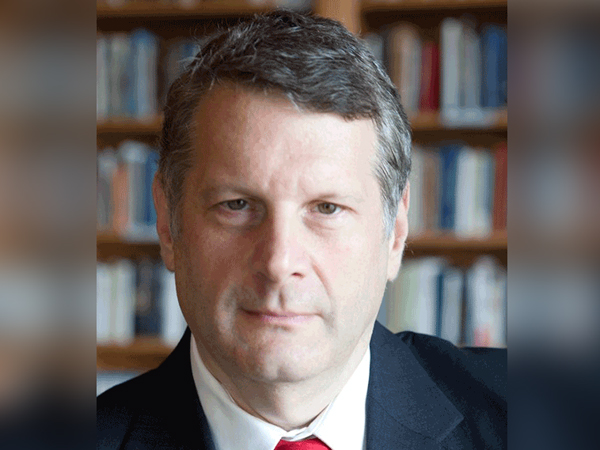Myles W. Jackson is Professor of the History of Science at the Institute for Advanced Study in Princeton, New Jersey. As an historian of science, he is interested in exploring the interconnections between scientific knowledge and society, between innovation and ethical matters. His job consists in bringing science and humanities together, to show how "scientific knowledge was generated and communicated" and how "culture shapes scientific knowledge".
This internationally renowned hisotrian of science has a topic for everyone.
You started your studies with a B.A. in German Literature and now your research interests range from bioengineering and molecular biology to instrument making and optics. Are these seemingly opposite topics connected by a common thread? Could you guide us trough your career path?
I started with a B.A. in German literature; however, I also studied molecular and cell biology as an undergraduate and even began a Ph.D. in the field before switching to the history and philosophy of science. Part of that decision was based on the fact that I did not want to spend fifteen hours a day, seven days a week in a laboratory. I also missed reading great texts. The history and philosophy of science enabled me to read those great texts, and I was also able to bring my training as a natural scientist to the table. I was always fascinated by what C. P. Snow calls “the two cultures”. I was interested in how different disciplines understand and describe the world, including what we would call “the human.” There are important similarities between the natural sciences and the humanities, but there are also crucial differences.
What does it mean to you being a historian of science? What are the main challenges?
For me, history of science is about situating the content of scientific knowledge in its proper historical context. Hence, tools provided by intellectual, cultural, and social historians, philosophers, sociologists, anthropologists, and scientists themselves are employed to investigate how culture shapes scientific knowledge. There is also a political and moral component to my work. Historians are morally obliged to show that where we find ourselves today is not ‘natural’ or ‘inevitable’, but rather the result of historical decisions made by scientists, politicians, philosophers, historians, etc. We need to show that there always were, and still are today, alternatives, and we need to explain why certain paths were chosen, while others were not. I think the main challenge for historians of science is to understand complex scientific theories and practices on the one hand, and then begin to unearth the bits of historical context, which can begin to elucidate how such knowledge was generated and communicated. This requires a command of the humanities and social sciences as well. For me, my love of science is unwavering. I enjoy speaking and thinking with scientists, although we do not always agree. This is, by the way, a good thing. When folks agree, they tend not to learn from one another.
A considerable part of your research has been devoted to the study of gene patenting and its history. Could you elaborate on the topic and explain to us what could be the repercussions of this trend towards the commodification of biological material?
I am interested in the ways that research in the biomedical science, particularly molecular genetics, underscore the instability of numerous legal concepts, such as ownership, property, privacy, and knowledge sharing. I have written extensively about how gene patenting has shaped the conduct and content of scientific research. The increase in the privatization of scientific knowledge raises a number of critical moral questions. If one owns the patent on a gene, one may legal stop other groups from conducting research on it. This thwarts scientific advancement and innovation. Indeed, this was the case with the breast cancer genes, which were patented by Myriad Genetics. I served as an expert witness for the American Civil Liberties Union. The case went all the way to the U.S. Supreme Court. At the moment I am working on how personal genomics companies in the U.S. sell the data ascertained by test kits from clients wishing to find out about their ancestry to insurance companies and Big Pharma. The fetish of Americans wishing to find out about their genetic ancestry speaks to the perceived role of biology in determining one’s identity. Indeed, debates have arisen in the U.S. as to whether once can ascertain the ‘race/races’ of individuals from their DNA? What are the legal, ethical, and social implications if one can? What are they if one cannot?
One your lectures at Ca’ Foscari focuses on the interconnection between Natural Scientists, Radio Engineers, Musicians, and the Trautonium. Is music part art and part science? What is a Trautonium and how does it work? Is the trautonium a “symbol” of this confluence of different spheres?
The trautonium was an early electronic musical instrument, originally built in Berlin during the late 1920s and early 1930s. There were numerous instantiations of it, including one built in the 1950s that provided the sounds of the birds screeching and flapping their wings in Alfred Hitchcock’s renowned horror film of 1963, “The Birds”. The trautonium’s tones are produced by a wire, which is placed over a metal plate. The wire is depressed by the performer that results in tube oscillators made of neon, which were later replaced by thyratrons, generating oscillations of various shapes. One could alter those shapes by turning various dials, thereby changing the tone color of the instrument. I generally do not think of music as being statically art or science. There are certainly components of both in music. Rather, I am interested in investigating the fascinating interactions between various communities, such as physicists, physiologists, radio engineers, and musicians. It turns out that natural scientists and engineers were able of offer musicians new sounds for their musical palette. They also enabled musicians to perform in microtonality. In a very real sense, science and engineering changed musical aesthetics over a period of 250 years. The trautonium was built by physicists, radio engineers, and physiologists who wished to improve the fidelity of radio broadcasting. They quickly discovered in their attempts that musical pitches could be generated and manipulated, and the trautonium was born. One of the leading avant-garde composers of the period, Paul Hindemith, famously collaborated with them and composed the first pieces for the trautonium back in 1930.
Why is public engagement important for researchers? Is there anything you would like to see in the future of your research field?
I think historians of science are morally obliged to speak about the relationship between science and society. And they need to do so by pointing to the ethical, legal, economic, philosophical, and social implications of scientific knowledge. Up until Donald Trump was elected, I lived in a democracy. A democracy only works when citizens are educated. Since scientific knowledge impacts us in ways hitherto unimaged, we all need to engage with it. Scientists need to speak with citizen in order to assuage any fears as well as convince them how important it is to the well-being of humanity to perpetuate good science. Given the recent rise of anti-intellectualism and popularism around the globe, this message as more important now than ever before.
Could you share with us an anecdote on the history of science that not many people know about?
My favorite cocktail party story (particularly for physicists): the Nobel Laureate in Physics, Max Born, emigrated to England to escape Nazi Germany. He had three children, one of whom was named Irene. She went on to marry a Welshman named Brinley, and they moved to Australia. Brinley became headmaster of Ormond College, the University of Melbourne and subsequently rose to the rank of deputy vice chancellor of Newcastle University College. His last name was Newton-John. And, he and Irene gave birth to a daughter named Olivia, the famous singer. So, the next time you hear her sing “Let’s Get Physical”, you might think that she is talking about the Copenhagen Interpretation of quantum mechanics. She’s actually not, but it is still an interesting (and true!) story.











